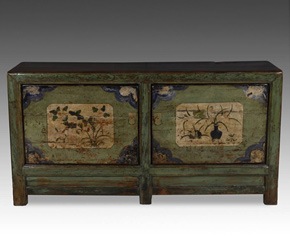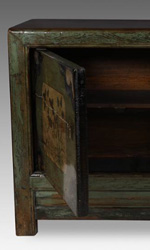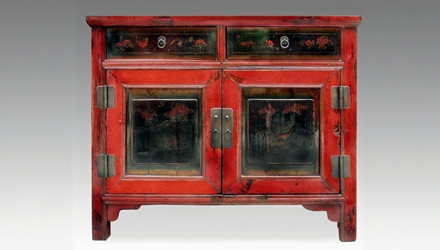Chinese Vernacular Furniture
 |
|
The term vernacular, with a broad brush, describes
 |
|
Cabinetmakers of the
Vernacular Chinese furniture is distinguished by beautiful shapes and simple, subtly decorated moldings. Designs can sometimes be so simple they might appear stark and plain, and by recreating traditional motifs artisans continually updated designs. It has been said, this furniture is like minimalist prose, conveying the richest meaning with the least clutter, and utilizing decorative patterns to achieve more with less.
However, ornate, highly carved pieces are also part of the vernacular Chinese repertoire. There are many excessively ornamented pieces that combine exquisite forms with bold artistry in terms of painting and carving. Oftentimes, the best craftsmen combined color, carving and the grain of wood to create beautiful works of art with interesting motifs.
During the 18th century the merchant class in China reached its economic, if not social zenith. Typically, vernacular Chinese furniture was made for this merchant class, and it marked a brilliant departure from the classical style associated with the Imperial court. In some instances this furniture was rustic and simple. In others, it was elaborate, made as luxury items for people with wealth of stunning proportions.
The vernacular Chinese furniture that is now available generally stems from the 19th century and dates from the latter part of the Ching dynasty (1644-1911). Historically this is important furniture. It represents, quite literally, the end of a cultural continuity that persisted uninterrupted for thousands of years. It also represents the beginning of a furniture tradition that expresses unusual creative freedom, vigor, and visual elegance.
 |
|
Download this Article: Chinese Vernacular Furniture.pdf